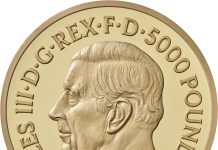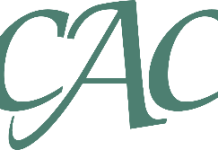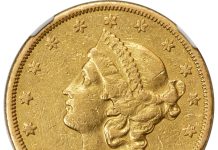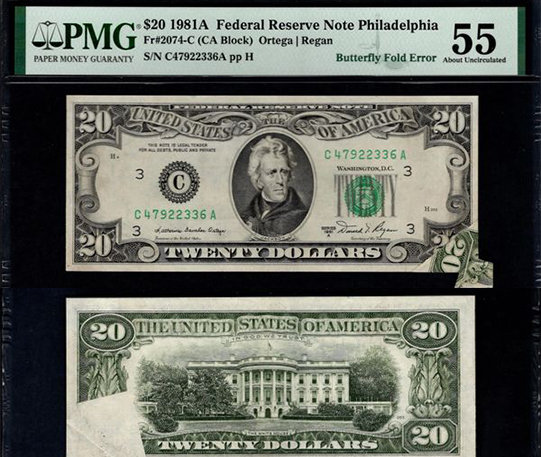
By Antoinette Rahn
Are you familiar with a butterfly fold? How about an inverted overprint or an inverted back? Or, perhaps, insufficient inking?
If this sounds a bit like a foreign language, it is, and it isn’t. It’s the language of errors within paper money, so while the terminology may not be readily familiar to everyone, the opportunity to come across one of these or other errors within notes is possible for anyone with access to currency. It’s not probable, mind you, but it is possible. Plus, if you dedicate some time and effort to studying these types of errors, you have an improved chance to add some to your collection.
The beauty of errors in currency and coins is that they are celebrated. In many cases, they are more celebrated than the multitude of pieces that are free from mistakes.
In this hybrid column, a little Paper Money Mindset and a little Eye on Errors, we look at a few examples, courtesy of UnitedStatePaperMoney.com, of these unique errors in currency.
The 1981 $20 note above includes an example of a butterfly fold error. With multiple steps in the printing process, if at any time in the process a sheet was bent or became folded in an origami-like fashion and then sat sandwiched between other sheets, it could result in this uncommon and curious error note.
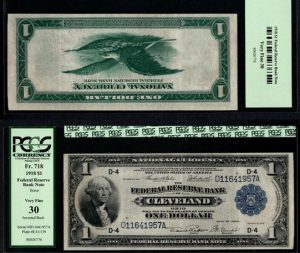
Another possible result of the lengthy and involved printing process, especially early on, ahead of technological advancements, is the presence of an inverted front or back, such as the 1918 $1 note at left. As explained by the experts of Goldberg Auctions at www.goldbergauctions.com, the early years of the printing process at the Bureau of Engraving and Printing involved three steps. The first step was to print the back of the note and then let it dry for 24 hours; print the face, and again allow the ink to dry for 24 hours; and then complete the process with the overprint, which included the Treasury Seal and serial numbers.
While that may sound like a relatively simple process, each step involved a plate printer and press person and various designs and plates for each step. Even under the watchful eyes of the people doing the printing, this type of error can occur when a sheet is incorrectly fed into the printing press for the second printing, the face of the note.
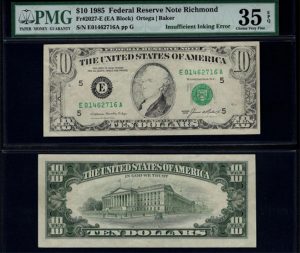
www.unitedstatespapermoney.com
This third and final error specimen reflects a step in the printing process when the printing plate lacks enough ink and is not fully saturated onto the paper. This very situation has left the 1985 $10 note at right to be labeled an error of insufficient inking. The image appears faint (such as this example) and may not appear complete. According to information presented at www.papermoneyguide.com, insufficient inking errors tend to occur during the first or second printing stage.
So, the next time an item of currency crosses your path, take an additional moment to look closely at what you have before you…you may be holding an error with a fascinating and possibly valuable story to tell.


